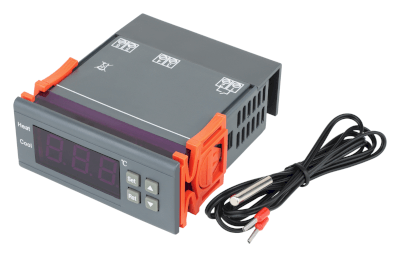What Is a Temperature Logger?

Temperature loggers are data loggers that measure temperature and record and store temperature data at arbitrary intervals.
Temperature loggers are widely used when temperatures need to be measured continuously, such as in the transfer of food or temperature control in cultivation.
Uses of Temperature Loggers
Applications for temperature loggers are diverse and include all industries that must ensure that temperatures are suitable. The following are some of the main applications:
- Transport of transplanted organs
- Experiments and research requiring temperature control
- Cooling of electronic equipment
- Cultivation of mushrooms and yeast
- Temperature control of warehouses during transportation to prevent defects
- Storing pharmaceuticals
- Maintain working environment
- Manage books in libraries, art galleries and museums
- Perform fermentation and smoking in agro-processing
- Store food products
- Monitor optimal temperatures for agricultural product development
- Measure the performance of a designed house
- Measure the temperature of hot springs
- Comfort temperature control of stores, etc.
Principle of Temperature Loggers
A temperature logger is a device that measures temperature at set intervals and digitally processes and stores the results. Depending on the product, the measurement interval can be selected from seconds to hours.
In the old days, constant measurements of air and liquid temperatures were periodically recorded with a colored pen on a roll of paper with a graph axis printed on it. Similar temperature recorders are still in use today and are called temperature recorders. Temperature loggers are expensive, require special pens and recording paper, and are difficult to store and analyze data.
Temperature loggers were developed as compact temperature loggers. The data conventionally recorded with a pen is stored in a storage medium called a logger. Compared to temperature loggers, temperature loggers are easier to use in the following ways:
- Small and lightweight
- Portable
- Inexpensive
- No need for special equipment such as pens, recording paper, etc.
- Data can be directly imported into a PC
- Can be used for remote measurement
Currently, temperature loggers can be placed in shipping containers or in warehouses to measure temperature deviations and help improve quality levels.
Structure of Temperature Loggers
A temperature data logger basically consists of a temperature sensor, memory, and battery.
The temperature sensor can be a thermistor, thermocouple (K, T, J), or platinum resistor, depending on the temperature being measured, and the required accuracy. Infrared sensors are also used to measure surface temperatures.
In general, most batteries are replaceable, but for ultra-compact types and autoclaves that are used under pressure, the entire battery is covered with metal and cannot be replaced.
Types of Temperature Loggers
There are various types of temperature loggers on the market, depending on how they are used and the temperature at which they are used.
1. General Use
This type is used for indoor measurements. They are designed with a digital display so that the temperature can be checked while the device is in place.
Some are waterproof, and others have a temperature sensor attached to the probe to enable measurement in confined spaces. Data can be transmitted wirelessly, by cable, NFC, Bluetooth, etc.
2. For Surface Temperature Measurement
Infrared sensors and temperature sensors with magnets are used to measure surface temperatures.
3. For Autoclaves
Autoclaves are also called high-pressure steam sterilizers. Autoclaves can sterilize heat-resistant spores. However, since the temperature in an autoclave is not constant, it is necessary to confirm that the environment is suitable for sterilization. Therefore, it is necessary to check the temperature at several points in the autoclave. For this purpose, we use temperature loggers that are encased to withstand high pressure.
Temperature loggers are also used for temperature mapping in high-pressure processing environments, such as retort pouch foods and canned foods.
4. In-Furnace Type
A reflow oven is used in the process of bonding printed circuit boards and electronic components with solder, which requires a temperature rise of 150°C to 230°C. To measure this constant temperature, a temperature logger is used. To measure this constant temperature, a temperature logger is placed in a heat-resistant case.
5. For Ultra-Low Temperature
Temperature loggers for ultra-low temperatures, such as those used in freeze-drying processes and deep freezers, can be used to confirm that vaccines and strains of bacteria are properly stored.
6. Ultra-Compact
Smaller than a button cell, these data loggers are used in containers or boxes during shipment.